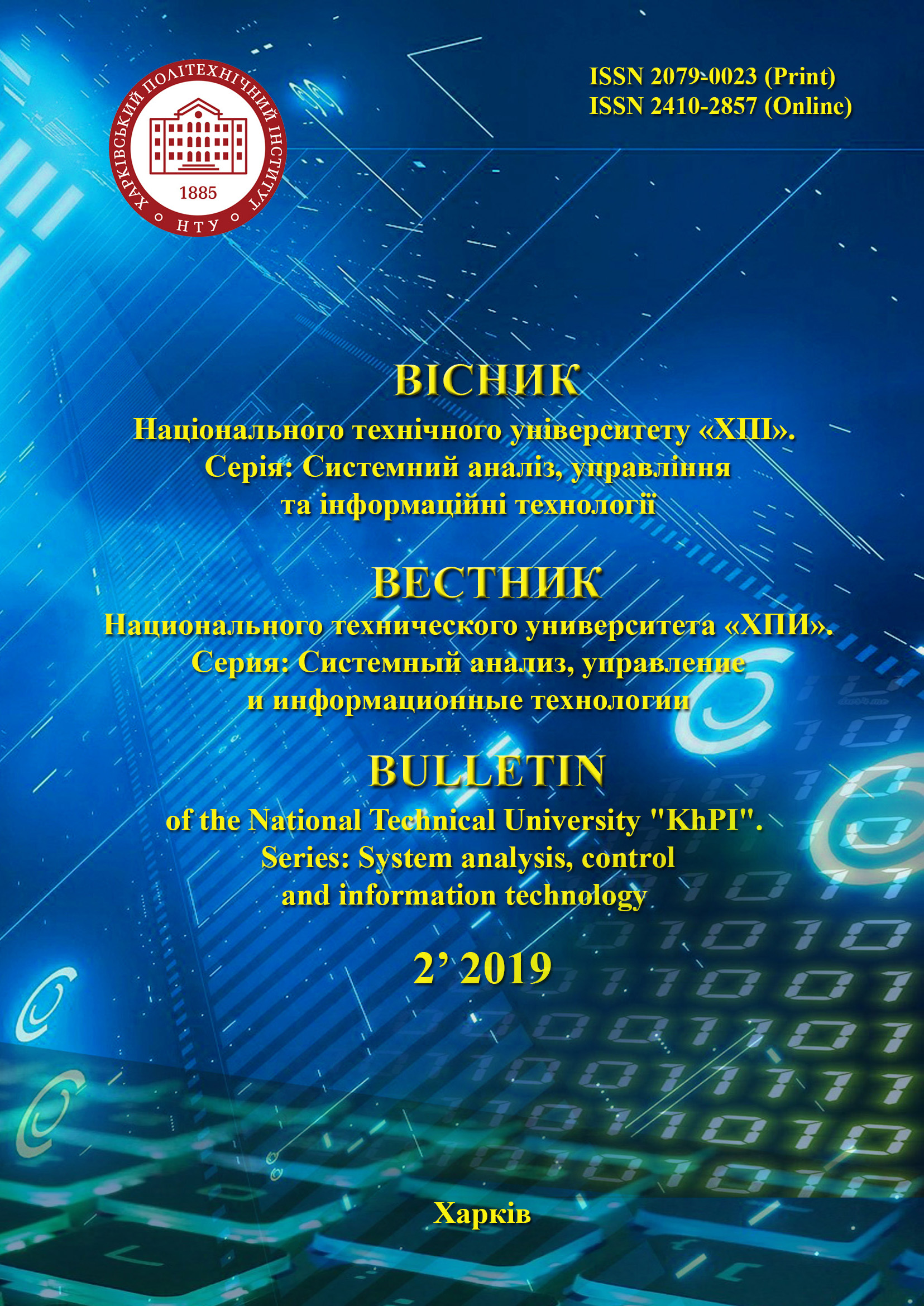USING THE AGGREGATED CRITERIA TO EVALUATE THE SOFTWARE TESTS QUALITY
DOI:
https://doi.org/10.20998/2079-0023.2019.02.12Keywords:
software, testing, quality, evaluation, assessment criteria, multiattribute object, aggregated criterionAbstract
An approach to evaluating the software tests quality using aggregated quality criteria is proposed. The article considers the finding of such characteristics of software tests that can be used to judge their quality and their need for improvement. The subject of the study is the formation of a software tests quality evaluation system, which can be used in the software development process. It is proposed to consider a software test as a multiattribute object. It is emphasized that it is necessary to take into account both quantitative and qualitative characteristics of tests and test coverage, which greatly complicates the construction of a model for evaluating the software tests quality. Various approaches to solving the problem of evaluating complex, multiattribute objects are considered. The problem of comparing and ordering complex objects taking into account different criteria is considered. The choice of the method of sequential aggregation of classified states to solve the problem of multi-criteria selection and assessment is justified. The stages of the procedure for solving the estimation problem using the method of sequential aggregation of classified states are considered. An activity diagram is constructed that reflects an algorithm for constructing a hierarchical system of criteria. The criteria for evaluating software tests are given, which belong to three groups - efficiency, coverage, and software implementation. For a hierarchical system of criteria aggregation, a set of indicators, their qualitative gradations with corresponding numerical intervals, are allocated. At the highest level of the hierarchy, it is proposed to use three composite criteria that correspond to the groups of efficiency, coverage and implementation, which will allow to obtain an integral indicator of the software tests quality. The resulting integral indicator includes five quality classes, each of which corresponds to a multitude of low-level indicator estimates. Tests quality evaluation will improve the testing process, which purpose is to ensure the specified quality of the software being developed.
References
Petrovskiy A. B. Teoriya prinyatiya resheniy [The decision theory]. Moscow, "Akademiya" Publ., 2009. 398 p.
Saaty Т. Prinyatie resheniy. Metod analiza iererhiy [The making decisions. Hierarchy analysis method]. Moscow, Radio i svyaz Publ., 1993. 278 p.
Doumpos M., Zopounidis C. Multicriteria Decision Aid Classification Methods. Dordrecht: Kluwer Academic Publishers, 2002. 245 p.
Köksalan M., Ulu C. An interactive approach for placing alternatives in preference classes. European Journal of Operational Research. 2003. Vol. 144, no. 2, pp. 429–439.
Larichev О. I. Verbalnyiy analiz resheniy [The verbal decision analysis]. Moscow, Nauka Publ. 2006. 181 p.
Royzenzon G. V. Sposobyi snizheniya razmernosti priznakovogo prostranstva dlya opisaniya slozhnyih sistem v zadachah prinyatiya resheniy [Ways to reduce the dimension of feature space for describing complex systems in decision-making problems]. Novosti iskusstvennogo intellekta [Artificial Intelligence News]. 2005, no. 1, pp. 18–28.
Petrovskiy A. B., Royzenzon G. V. Mnogokriterialnyiy vyibor s umensheniem razmernosti prostranstva priznakov: mnogoetapnaya tehnologiya PAKS [Multi-criteria selection with reduced dimension of feature space: multi-stage PAKS technology]. Iskusstvennyiy intellekt i prinyatie resheniy [Artificial Intelligence and Decision Making]. 2012, no. 4, pp. 88–103.
Furms Y. M. Modifitsirovannyiy metod ekspertnoy nominalno-poryadkovoy klassifikatsii [The modified method of expert nominal ordinal classification]. Iskusstvennyiy intellekt i prinyatie resheniy [Artificial Intelligence and Decision Making]. 2010, no. 4, pp. 81–93.
Petrovskiy A. B., Tihonov I. P. Fundamentalnyie issledovaniya, orientirovannyie na prakticheskiy rezultat: podhodyi k otsenke effektivnosti [Result-oriented basic research: approaches to evaluating effectiveness]. Vestnik RAN [RAS Bulletin]. 2009, vol. 79, no. 11, pp. 1006–1011.
Important Software Test Metrics and Measurements. URL: http://www.softwaretestinghelp.com/software-test-metrics-and-measurements (access date: 23.01.2019).
Gotel O., Cleland-Huang J., Hayes, J., Zisman A., Egyed A. Software and Systems Traceability. London: Springer, 2012. 152 p.
A SLOC Counting Standard. URL: http://csse.usc.edu/TECHRPTS/2007/usc-csse-2007-737/usc-csse-2007-737.pdf (access date: 03.06.2019).
Downloads
Published
How to Cite
Issue
Section
License
Copyright (c) 2019 Bulletin of National Technical University "KhPI". Series: System Analysis, Control and Information TechnologiesAuthors who publish with this journal agree to the following terms:
- Authors retain copyright and grant the journal right of first publication with the work simultaneously licensed under a Creative Commons Attribution License that allows others to share the work with an acknowledgement of the work's authorship and initial publication in this journal.
- Authors are able to enter into separate, additional contractual arrangements for the non-exclusive distribution of the journal's published version of the work (e.g., post it to an institutional repository or publish it in a book), with an acknowledgement of its initial publication in this journal.
- Authors are permitted and encouraged to post their work online (e.g., in institutional repositories or on their website) prior to and during the submission process, as it can lead to productive exchanges, as well as earlier and greater citation of published work (See The Effect of Open Access).


